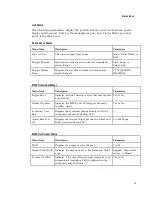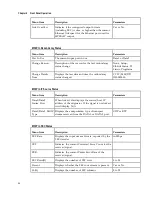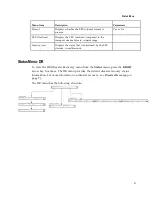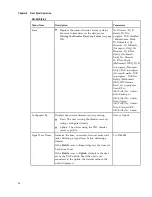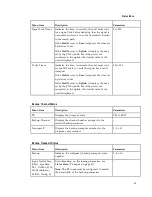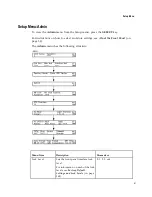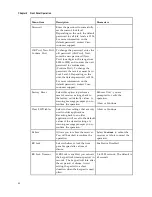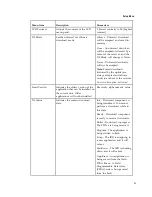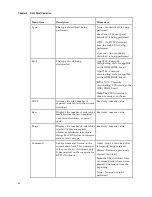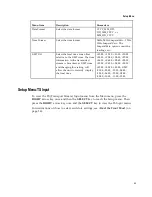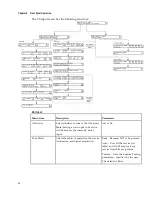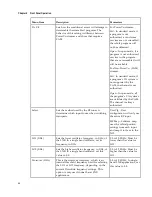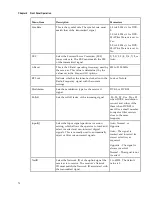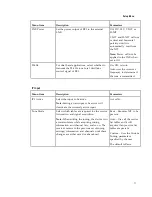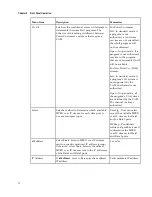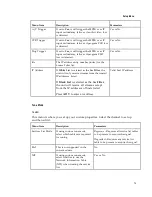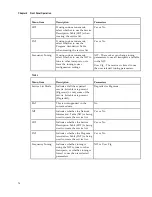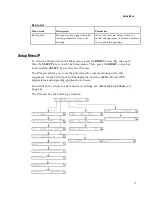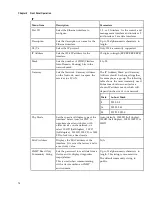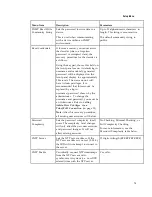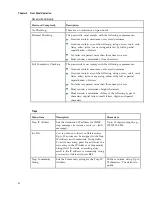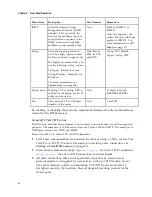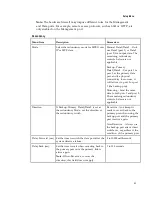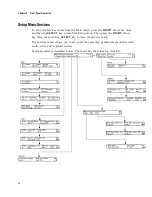
Setup Menu
69
Menu Item
Description
Parameters
Satellite
This is the name of the satellite currently
selected. Choose the satellite you want to use
to receive the signal from the list of satellites
available. When you select a satellite, the
orbital position (OrbPos) is displayed. This is
important for automatic switching from one RF
input to another in the event of loss of the
signal, allowing the receiver to acquire an
alternate signal.
When the satellite is not
listed, enter the known
orbital position (OrbPos)
of the satellite you want to
use to receive the signal.
OrbPos
This is the location in orbit of the satellite
currently being used. The satellite position (in
degrees) in combination with the direction
(either
E
(East) or
W
(West)) denotes the
satellite position the dish connected to the
current RF Input should point to. This is used
when the satellite is not available in the look-
up menu list.
For manual configuration, simply enter the
location of the satellite using the numerical
keypad. The receiver will not recognize the
satellite name and identify it as Unknown. This
setting is required to resolve any ambiguity
between RF inputs during automatic disaster
recovery.
Degrees
E/W
Denotes the satellite position the dish
connected to the current RF Input should point
to. This is used when the satellite is not
available in the look-up menu list.
E, W or NA
Pol
Marks the polarity of the signal connected to
this RF input.
H (horizontal), Vert
(vertical), A (Auto). Auto
is only applicable when
LNB Power is set to H-NIT
or V-NIT.
Validate Orbital
Position
This option allows you to configure and
validate the RF inputs to match those expected
by the network. The receiver will check to see
if all the frequencies in the Network
Information Table (NIT) can be tuned to.
Orbital Position
Validation Date
This displays the last date that the ‘Validate
Orbital Position’ operation was performed.
N/A
Freq (GHz)
This is the current Downlink operating
frequency used by the receiver for tuning the
received digital signal.
0.0 to 15.0 GHz
Summary of Contents for D9824
Page 22: ......
Page 26: ...Chapter 1 Introduction 4 On Screen Display support on baseband output NIT Retune Recovery ...
Page 40: ......
Page 164: ......
Page 306: ......
Page 368: ......
Page 370: ......
Page 388: ......
Page 410: ...Appendix C Compliance 388 Declarationof Conformity ...
Page 415: ......

